REVIEW – Smartphone cameras may have overtaken point-and-shoot cameras as the most ubiquitous photography equipment today, but the powerful and feature-rich DSLR systems will be around for a long time to come. With that in mind, many companies are continuing to produce well-designed and durably-built bags and packs to carry a DSLR plus its accessories and other items. Our latest example of this is the Hex Ranger Clamshell DSLR Backpack. This pack is not only loaded with features, but includes a high level of customization, all with a low-profile appearance. Let’s check it out. Gadget on!
What is it?
The Hex Brand Ranger Clamshell DSLR Backpack is a rugged backpack that is loaded with features and customization for organizing and protecting your DSLR camera and accessories.
Hardware specs
- Available colors: Black (reviewed here) and Camo
- YKK Zippers with metal pulls
- Padded laptop sleeve fits up to a 15″ MacBook
- Genuine 500D Cordura® nylon exterior
- Dimensions: 18″L x 12″W x 6″H
- Weight: 3.5lbs
- Capacity: 21L
- Patent Pending
What’s in the package?
- Hex Brand Ranger Clamshell DSLR backpack
Design and features
Initial impression: The Hex Ranger Clamshell DLSR Backpack has a really nice look and feel. It has a low-key, subtle style, but its side webbing (which you will see in the pics below) give it a bit of a tactical look. The Hex Ranger Clamshell DSLR Backpack has essentially two compartments: the large, main section and the smaller front pocket (there is also a laptop compartment on the back). More detail on these below as well.
The Hex Ranger Clamshell DLSR Backpack also looks and feels like it has been very solidly constructed. More on this below.
The lower right corner of the Hex Ranger Clamshell DLSR Backpack’s front pocket has a matte black rubber placard that shows the Hex Brand name and logo with some other information. Like the overall design of the pack, this placard is subdued so as not to stand out and “scream” the brand’s logo.
The Ranger has large-gauge YKK zippers with customer zipper pulls that have hex-shaped holes and the Hex name on them.
The Hex Ranger Clamshell DLSR Backpack is made from genuine Cordura Nylon fabric, specifically 500D material, which is a top of the line fabric in the backpack and bag industry. It is lightweight and abrasion- and water-resistant. Already, this is good indicator that Hex Brand has chosen quality materials for the construction of this backpack.
First, let’s take a look at the Hex Ranger Clamshell DLSR Backpack’s outside pocket. This pocket takes up just shy of half of the front of the pack, and has a zipper that wraps around half of its perimeter, giving good access inside. Inside this pocket are a few features to note. First, it has a wide pocket that spans the entire width. Below this is a detachable keyring (see image below). Below this are three mesh pockets that can be used to secure and organize smaller items. Overall, this pocket has a bit of depth to it, but is probably best used to organize and store smaller/flatter items. Large items can very comfortably be placed into the main compartment, as you will see below. Finally, you can see that the interior of this pocket’s main flap is lined with a material with “hex” shapes—Hex Brand calls this “Grey Heritage Hex Lining”. This material is intended to aid in protecting the contents of this pocket from moisture, should you get caught in a rain shower, but this will not completely keep your items dry if exposed to water for an extended period—the Ranger has another feature for this (more on this below).
The detachable key ring has a single pushbutton quick-release that is easy to operate one-handed, both attaching and detaching. You could also attach USB sticks, a knife, a flashlight or other small items to this that you want to access quickly.
Let’s take a look at the right side of the pack. At the top is a compression strap with quick-release buckle as well as a strip of MOLLE loop-type webbing that runs to the middle of the side of the pack, and finally a zippered pocket along the bottom third of the sie of the pack. More on each of these features below.
The above photo shows the top portion of the right side of the pack. Starting at the top, there is a compression strap that has a quick-release buckle. These are super handy for when you may not have your pack completely full and you just want to cinch it down a bit so it doesn’t flop around, or you just want to be able to access one side or the other. The quick-release buckles are also very handy because they allow you to easily unbuckle them to gain access to the full clamshell main compartment. The compression straps also have a small retaining strap that allows you to coil up any extra webbing and keep it from flailing around. A nice feature. Also in the photo above, you can see the strip of MOLLE loop-type webbing material which runs along either side of the pack. This webbing material is stitched and bar-tacked at intervals that form short loops in the webbing, so you can attach items to the outside of the pack with carabiners and so forth. Super handy for something you may want to grab quickly.
Next, let’s move down to the lower half of the right side of the pack, as seen in the above photo. There is a compartment here with a zipper that opens on two sides which gives a good amount of access to the interior. Inside, the pocket is lined with a soft, faux fur, fleece-type material which makes this compartment great for holding items that you don’t want to scratch but that you may want to have quick access to from the outside of the pack, items such as a portable battery, headphones, and so forth.

Next, let’s take a look at the left side of the pack, as see in the photo above.
Like the left side of the pack, the right side also has a quick-release compression buckle strap near the top, as well as a segmented strip of MOLLE loop-type webbing running down the side. Also, note the zipper for the laptop compartment (more on this below).
Like the right side of the Ranger pack, the bottom third of the left side also has an external pocket, but Hex Brand calls this a “flush pocket” and this one is different from the fleece-lined zipper pocket on the opposite side. This one has an open top opening and tucked down inside it is a plastic hook on a short strip of elastic that could serve two purposes. The obvious use of this hook is to secure keys, a knife, a flashlight or just about anything you like, and tuck it into the pocket.
The less obvious use of this hook, but one that the clever Hex Brand folks have thought about, is to secure the zipper pulls of the main compartment as a theft deterrent. Of course, the hook is not an actual lock, nor is it made of metal, but unhooking both or even one of the zipper pulls from the hook takes a few seconds (0r several seconds in my case), which could very well be enough to discourage a would-be thief. Additionally, the hex-shaped holes in the custom zipper pulls are certainly beefy enough to have an actual lock attached to them for an even higher level of security, if you wish.
In addition to the plastic hook inside, this pocket also expands via the use of a cleverly-concealed strip of elastic, as seen in the image above. This allows the pocket to grow to hold larger items as seen below.

I placed my Contigo travel coffee mug in this expanded pocket and it fit perfectly, and the elastic helped secure it into the pocket, as seen in the photos above and below. This pocket could be used to hold all types of liquid containers.
The above photo shows another view of my Contigo mug nestled into the Rangers’ side elastic pocket.
The back of the Ranger has a custom molded and padded EVA foam panel that has the Hex Brand logo molded into it, as seen in the image above. This molded EVA foam is very comfortable against the wearer’s back, and the four channels and the logo allow airflow to help keep your back dry and cut down on sweat. Additionally, the padded back provides some additional protection for the laptop compartment which is just under it (more on this below).
The photo above shows the luggage pass-through being used atop a rolling carry-on bag. The pass-through is basically an open slot that passes completely through from the left to the right side of the pack. A suitcase’s handle can be slid through this slot as shown above. This is a handy feature if you get tired of wearing your backpack and would rather your piece of rolling luggage hang onto it for you.
In the photo above, I’ve flipped the shoulder straps inside out to show their construction underneath. A portion of the shoulder straps have a mesh-type “Airmesh” material that also aids in ventilation to help cut down on sweat build-up.
In the close-up photo above, I also wanted to highlight the stitch points where the shoulder straps are attached to the main body of the pack. The stitching here appears to be very secure, and if you are going to have heavier stitching anywhere in your pack, this is one place where you definitely want it.
Above, a closeup of how the lower end of the shoulder strap webbing is attached to the main body of the Ranger. There is a triangular-shaped piece of Cordura fabric that captures the webbing and it is all stitched together very solidly. This is a good construction technique and helps with the overall integrity of the pack.
The shoulder straps have metal hardware which makes then even more durable and longer-lasting in than the plastic hardware on most backpacks. A definite plus.
The above photo shows the front of the left shoulder strap, which includes a matte black rubber logo placard like the one on the front pocket of the pack. Also shown is one of the adjustable attachment points of the sternum strap. More on this below.
Just behind this rubber logo placard on the left shoulder strap is a small hidden pocket. HThe Hex Brand site indicates that this is to give storage and quick access for memory cards, which is certainly one item that can be placed here, but just about any small item would fit. However, keep in mind that this pocket has an open top and no method to close it.
The photo above shows the Ranger’s sternum strap that can be secured across the wearer’s chest, that can help adjust the load distribution of the pack, especially if it is loaded heavily. This strap can be adjusted for the comfort of the wearer’s preference by both sliding either side vertically along strips of webbing, and it can be tightened horizontally. The sternum strap features a quick-release buckle similar to the cinch straps on the side of the pack.
The Ranger’s top grab handle is built around a strip of webbing with padding for added comfort.
Next, let’s take a look inside the main compartment. In the above photo, I’ve fully unzipped the clamshell main compartment. I’m a big fan of clamshell-style, fully-opening backpacks because they give you the most access to the contents of the pack for loading and unloading, but if you don’t want to open the entire compartment, the double-zipper allows you to only open a portion of it if desired.
Both the left and right inside walls of the main compartment each have a top and bottom mesh pocket with zipper closure, both of which are super handy for the organization of small items. Above, the left side.
And above, the right side. Both the left and right sides mirror each other.

The inside of the flap of the main compartment has two long, mesh, zipper pockets that can also be used to hold and organize items. Also note that the inside of the flap is also lined with the same material as that found in the inside of the front pocket.
Now let’s have a look at the heart of the Ranger pack, the customizable compartmentalization in the main compartment. This is accomplished via a combination of a felt-like fabric interior upon which a series of divider walls can be attached in a multitude of different configurations. EDIT: The wall dividers are about 3.75″ deep.
In the above photo, I’ve done just a minor amount of re-configuring of the dividers to better fit my DSLR and some accessories.

As the pic above shows, starting from the top, I’ve placed my large telephoto zoom lens in the top compartment, A charging cable, my DSLR battery charger and a shoulder strap with lens cap holder in the next set of compartments, and my waterproof point-and-shoot camera and my DSLR camera body with a small lens in the compartments near the bottom of the pack. As you can see, I actually still have even more ability to customize things if I wanted, and some of those smaller items could be moved to other locations in the Ranger, allowing the dividers to be further re-configured.
The above photo shows a close-up of one of the dividers walls. Each has a soft, felt-like exterior, similar to the fabric that nearly the entire interior of the Ranger’s main compartment is lined with. Additionally, the bottom and sides of each divider wall have a Velcro-like “sticky” portion that can attach either to the inside of the Ranger’s main compartment or to other divider walls. This allows all of the dividers to “lock” together, helping to ensure the protection of items inside them.
The Ranger’s laptop compartment is accessed via the zipper along the left side of the pack. (You can also see one side of the luggage pass-through which was described above.)
The laptop compartment is lined with the same soft, faux fur, fleece-type material as the smaller zip pocket on the side of the pack, which helps prevent your laptop from being scratched and provides a bit of additional bump protection. The laptop compartment will hold up to a 15″ MacBook Pro, and that is exactly what I have placed inside it in the above photo.
The bottom of the Ranger has two features to note. First, the bottom panel is made from a different material than the rest of the exterior; more on this below. In addition, there are two adjustable straps on the bottom that can be used to lash larger items to the bottom of the pack, as you will see below.
The above close-up of the Ranger packs’ bottom shows one of the two webbing straps as well as a better view of the texture of the bottom panel material. Hex Brand calls this a “durable non-skid bottom.” Its a sort of rubbery material with a rough texture that is intended to help keep the Ranger from falling over while also providing a more durable material on the part of the pack that will be more frequently subjected to abrasion. The two webbing straps have metal hardware, another plus considering they are on the bottom of the pack.
Above, I’ve used the bottom webbing straps to lash my admittedly large and fairly clunky tripod to the bottom of the Ranger, but this pack and its bottom straps handle it quite well. You could also use these straps to hold a sleeping bag, sleeping mat, blanket, jacket, or any number of other large, bulky items.
The final feature I’dliketo describe is the Ranger’s hidden waterproof rain cover. The cover typically resides in a pocket between the molded EVA back panel and the main interior compartment. The opening of this pocket is on the bottom of the pack and it is secured with a strip of Velcro. In the photo above, I’ve pulled open the pocket and you can just see the rain cover peeking out.
Pulling the out the rain cover, you can see that it has the Hex Brand logo prominently screen-printed on it.
The waterproof rain cover can be placed around the entire Ranger pack and fully covers it. It has elastic around its edge that helps keep it in place.
The Hex Brand Ranger Clamshell DSLR Backpack is very comfortable to wear. The shoulder straps a nice and wide and fairly thickly padded, which are the essential features for shoulder strap pack comfort. (Yes, I had not quite properly adjusted the sternum strap in the pic above.)
I personally like the look of the Ranger pack; low-key basic black so as not to attract undue attention to anyone who might who might be curious about its potentially expensive contents.
The perspective of the photo above makes the Ranger look huge on me, but it is not really that large (compare with the pics above).
What I like
- Low-key but attractive style
- Solid construction and quality materials
- Loaded with features
- Main compartment dividers are great for customizing the pack for your needs
What needs to be improved
- Can’t really think of much; Hex Brand has done a great job with this pack
Final thoughts
The Hex Brand Ranger Clamshell DSLR Backpack is loaded with features and is very well-built. If you have a DSLR camera and a laptop, plus lots of other accessories, this might be a great backpack for you and worth a look.
Update 6/26/20
This backpack is loaded with great features for anyone who uses a multi-lense DSLR, a laptop and accessories, but I don’t find myself using my DSLR outside my home much these days, so for me, this pack got phased out of my rotation.
Price: $199.99
Where to buy: hexbrand.com or Amazon
Source: The product sample for this review was provided by Hex Brand.




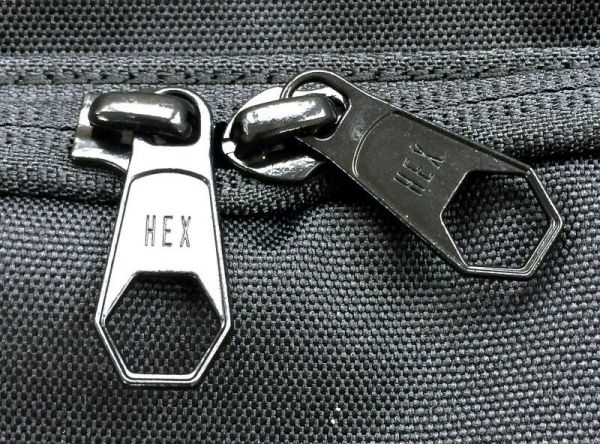

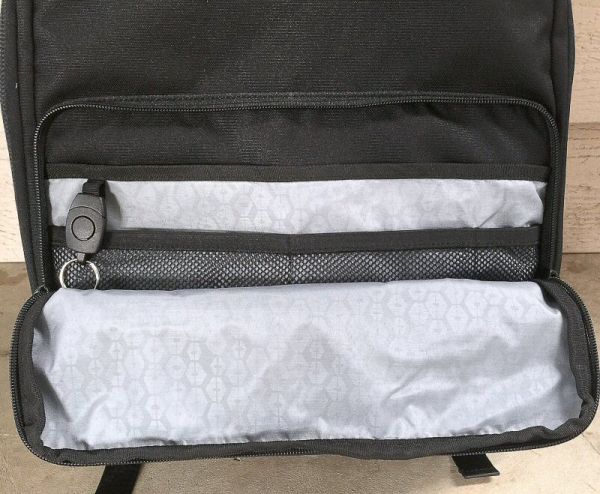








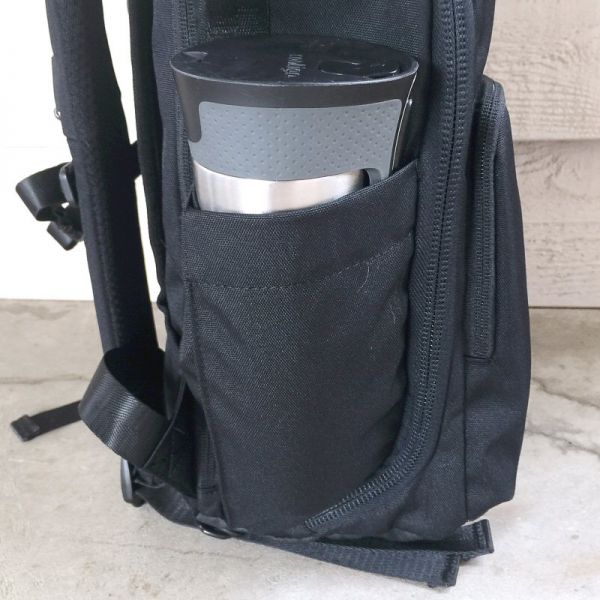




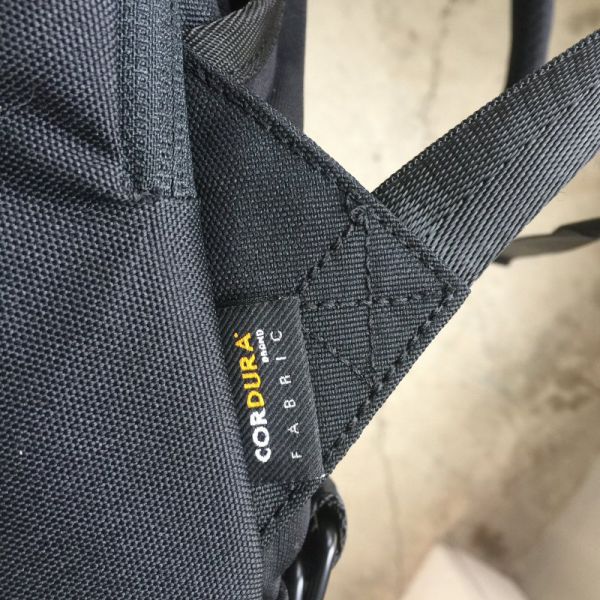




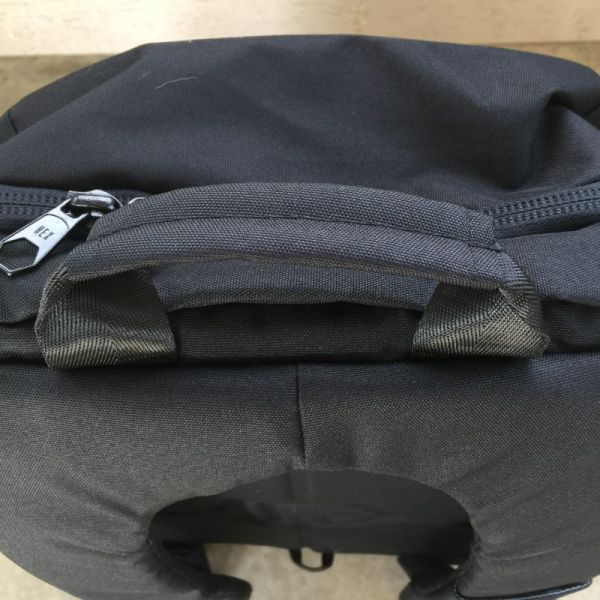









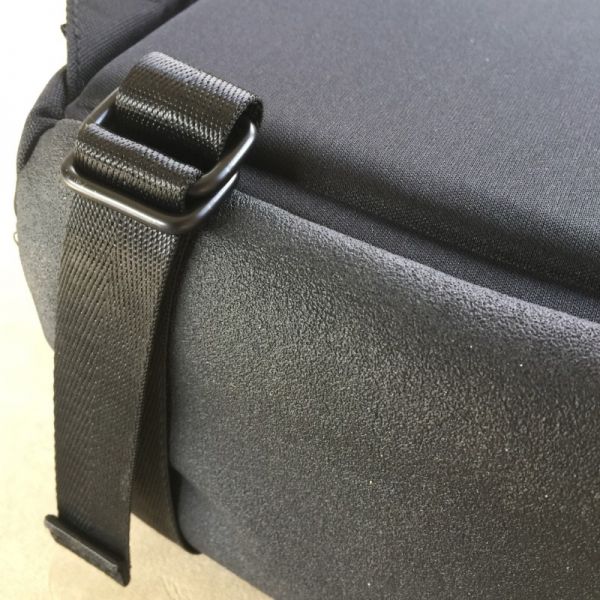
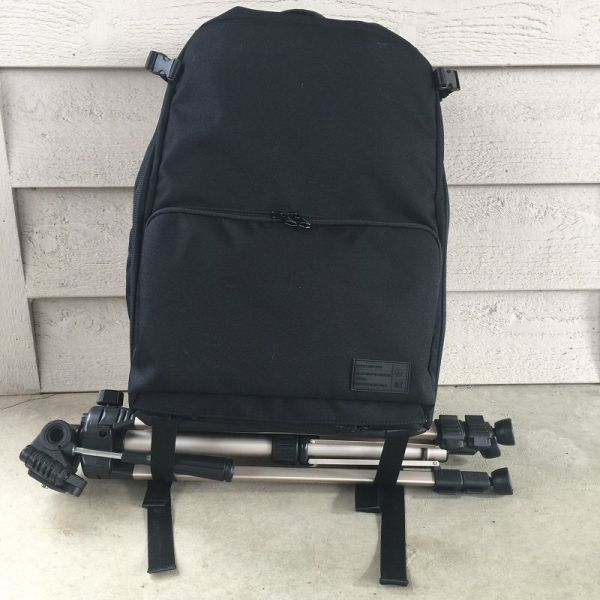








Gadgeteer Comment Policy - Please read before commenting
This is going to be a great fit for my new DSLR and its accessories.. can’t wait to get one real soon.
Thanks for reviewing this backpack.
Nhick
You are welcome! If you buy one, stop back and let us know what you think of it. 🙂
Hello. Very good review. Do you know the depth of the divider walls? I wonder if it’s deep enough for a semi-pro DSLR like the Nikon D810 and large f/2.8 lenses. It looks like the perfect bag for me if walls are deep enough. I can’t find that information anywhere. Thank you.
Thanks for the kind words and for stopping in here and taking the time to comment, Frank! I measured the walls and they are approximately 3.75″ deep. Hope this helps!
Great backpack i love it for my city walks, its sturdy and not so eye catching.
I was looking for something like this for a long time i used to use my eastpak with an F-stop ICU but it is a hassle to get out your gear if you don’t want to miss the shot.
I purchaed it with the help of your review its such an underrated backpack imo